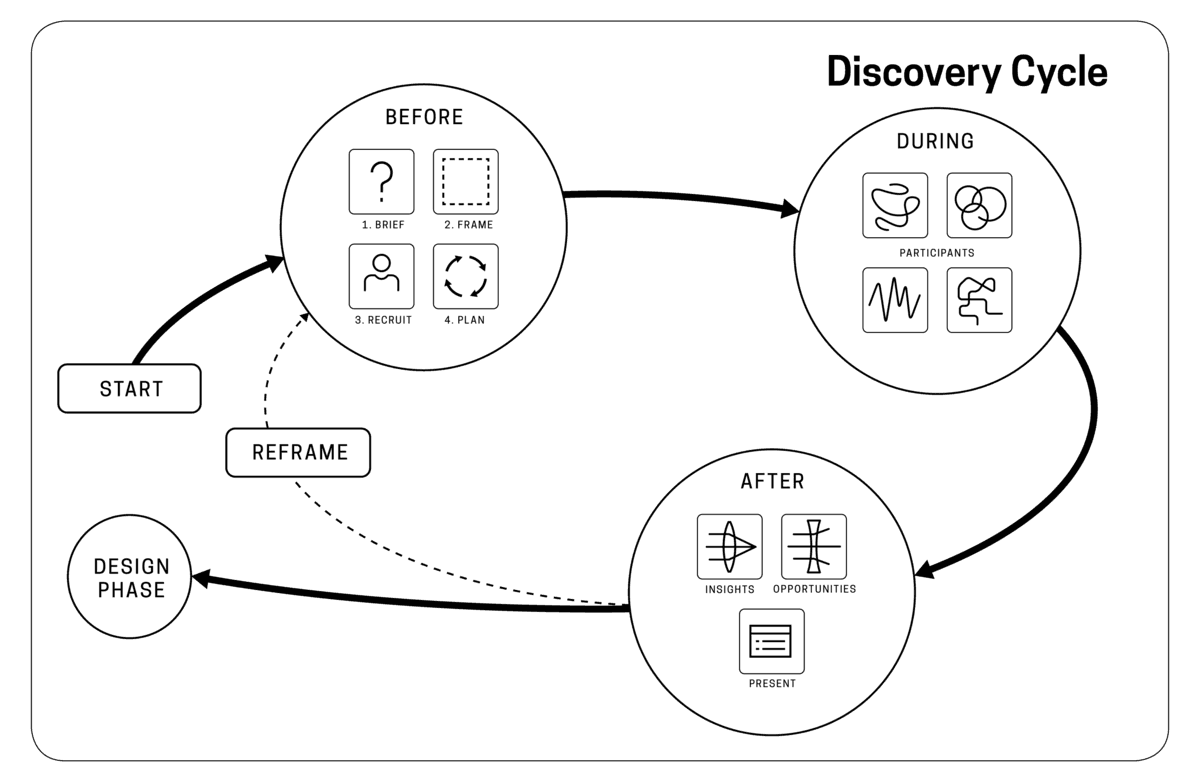
Overview
Reading time: 1 minute
Human-centered design (HCD) is a qualitative research method that helps groups solve problems and seek solutions that prioritize customer needs over a system’s needs.
HCD involves four phases of sequential work: discovery, design, delivery, and measurement. This guide focuses on the concepts that make up the first phase, discovery. It explains how discovery research, and synthesis of research findings, can help you to identify opportunities for improvement.
You may wish to review this introduction to human-centered design to learn more about HCD principles and practices, and the basics of the HCD approach.
What is discovery?
When designers say “discovery”, they’re talking about research. This research can take many forms, but it always includes both primary research, which is research with the people who are involved in the project, as well as secondary or desk research, such as reading white papers and articles.
The discovery cycle
HCD discovery should be thought of as a cycle, instead of a linear process. One of two things typically happens after you complete a research phase:
- The team finds new research and/or design opportunities to follow.
- The team finds that the problem that they were investigating was slightly off-target, so they need to adjust the research frame and start discovery again.


